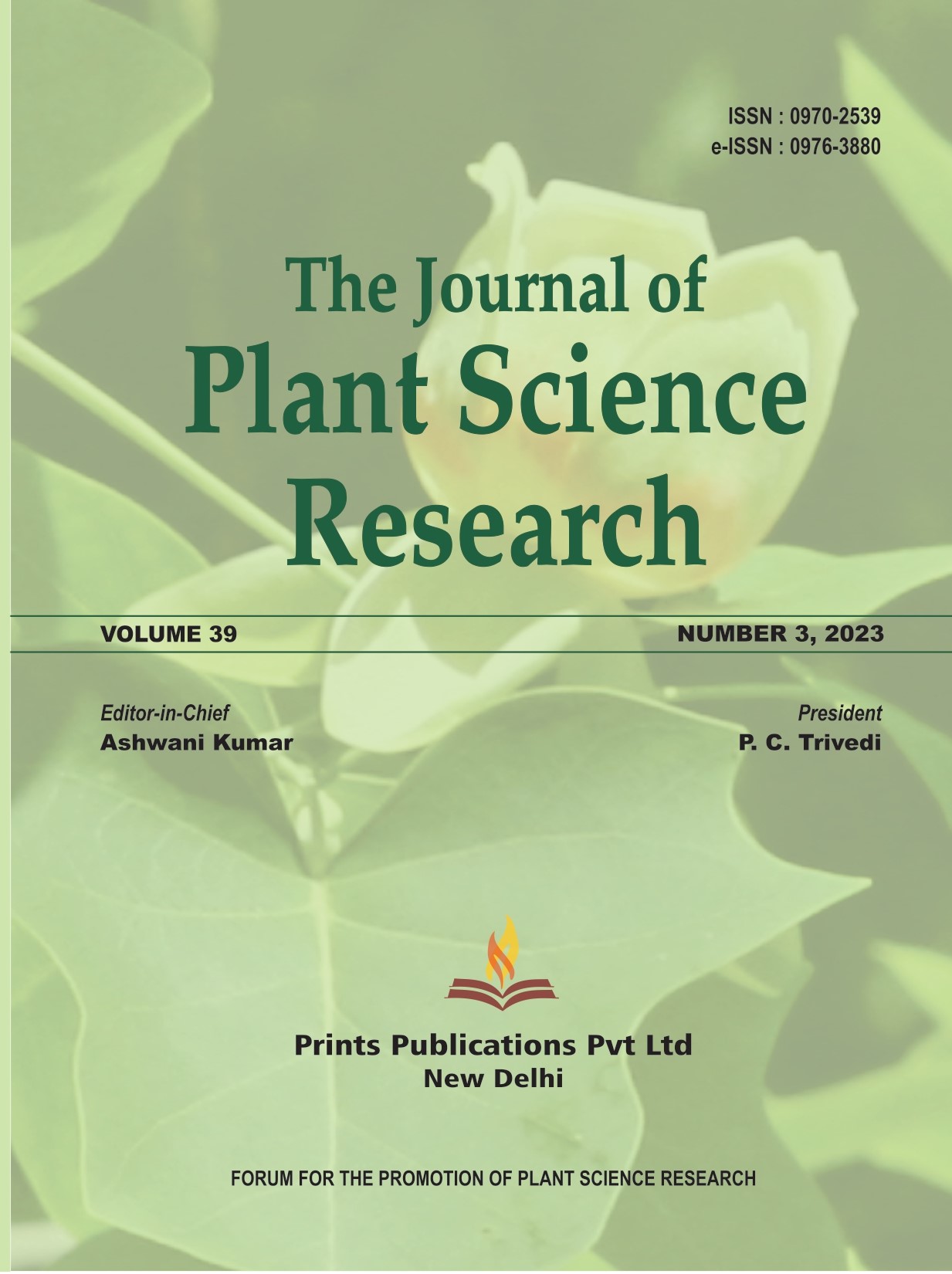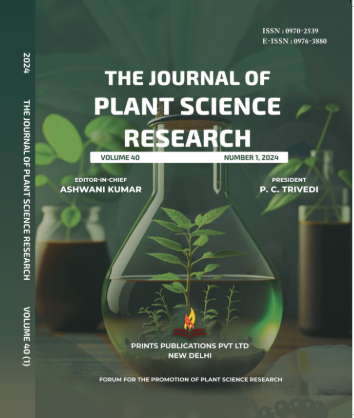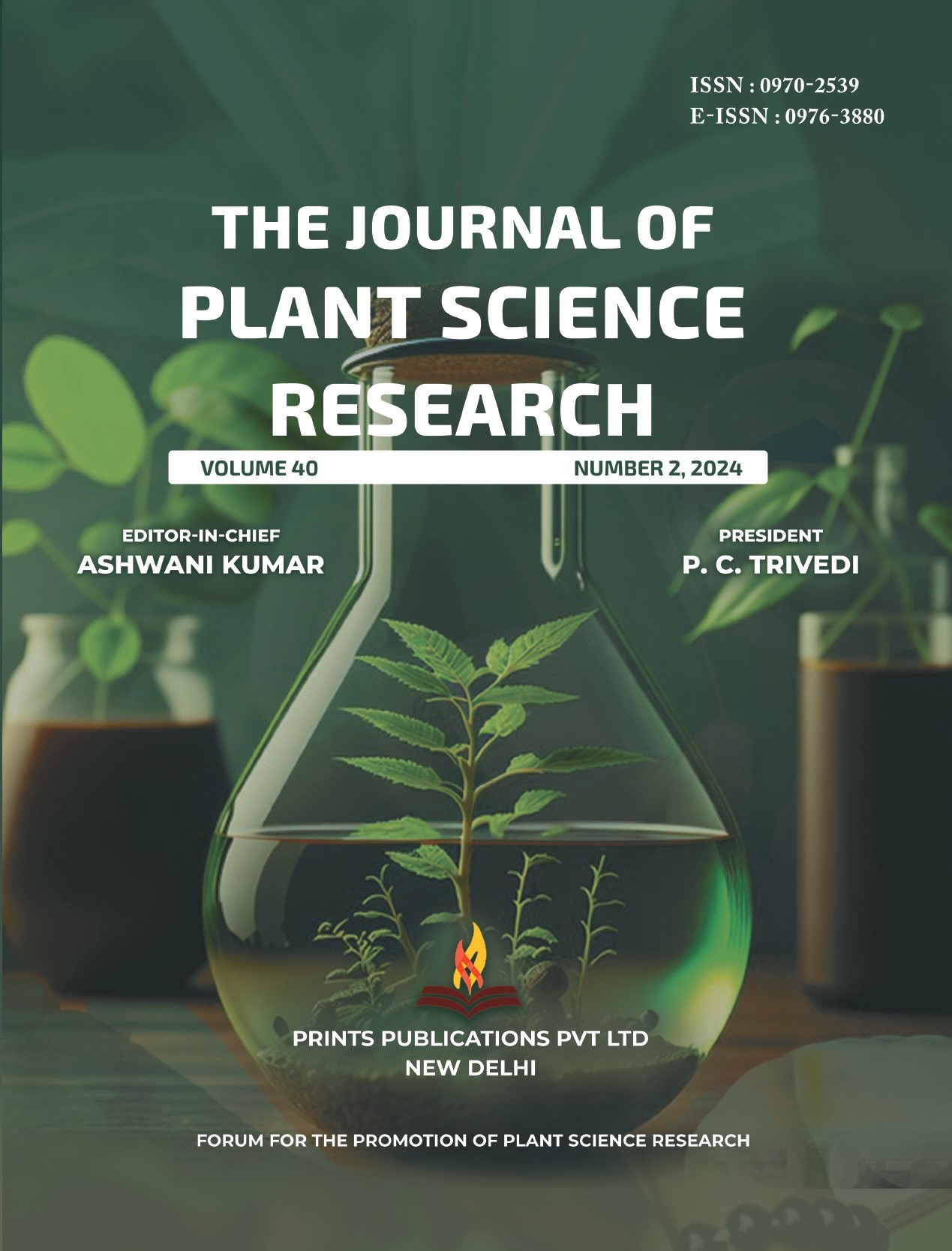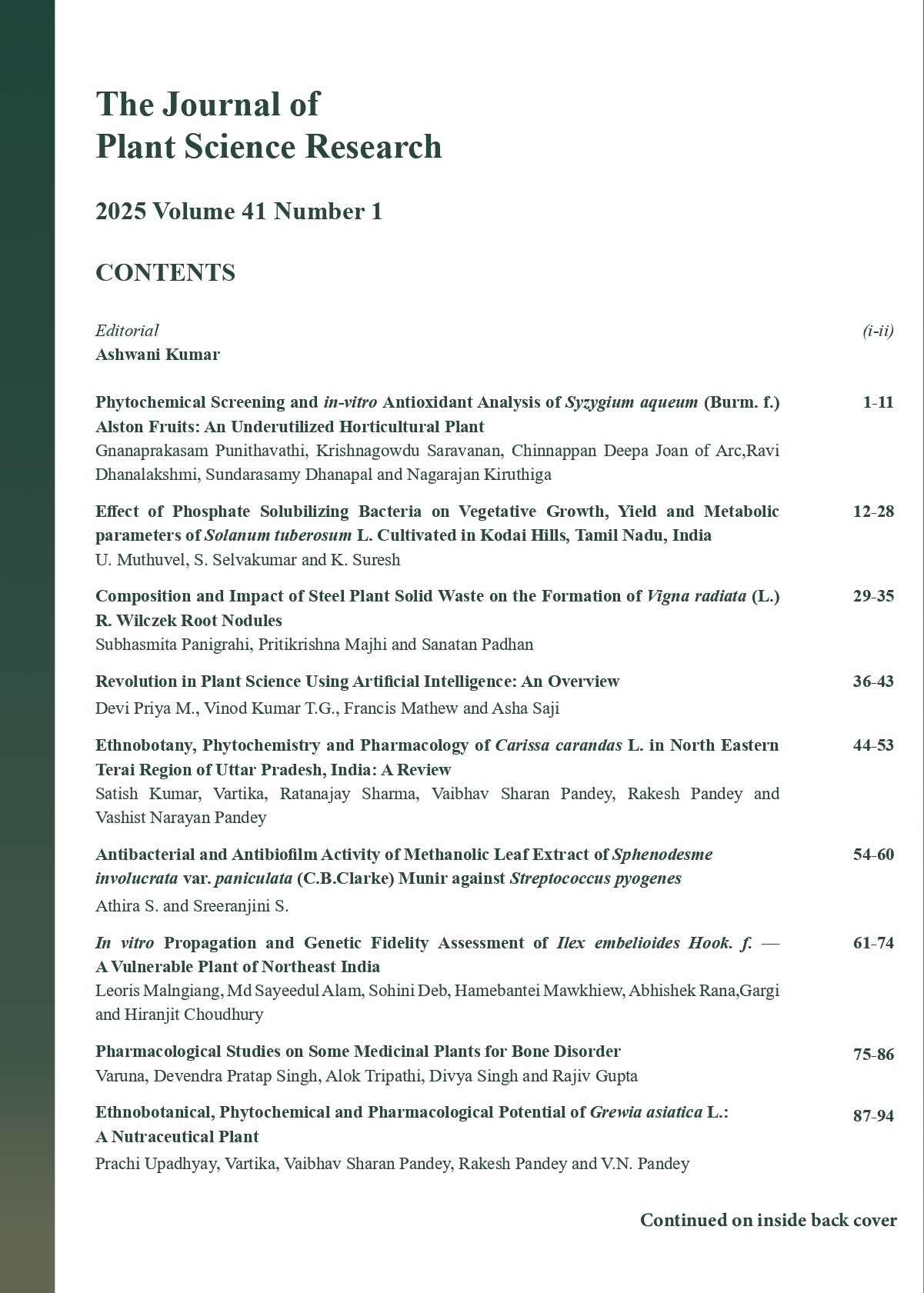The Journal of Plant Science Research - A UGC Care-Listed Journal
Published in Association with Forum For the Promotion of Plant Science Research
Current Volume: 41 (2025 )
ISSN: 0970-2539
e-ISSN: 0976-3880
Periodicity: Tri-annual
Month(s) of Publication: April, August & December
Subject: Botany
DOI: 10.32381/JPSR
Online Access is Free for Life Member
Composition and Impact of Steel Plant Solid Waste on the Formation of Vigna radiata (L.) R. Wilczek Root Nodules
By : Subhasmita Panigrahi, Pritikrishna Majhi, Sanatan Padhan
Page No: 29-35
Abstract
The mung bean, or Vigna radiata (L.) R. Wilczek, is a legume plant that belongs to the Fabaceae family of peas and is cultivated for its edible seeds and young sprouts. Mung beans, like other culinary beans, are rich in protein and dietary fiber. They are also a good source of iron, potassium, magnesium, and several important amino acids. The nitrogen-fixing bacteria found in nodules on the roots of mung bean plants,like those of many other pea plants, contribute nitrogen to the soil. It is now crucial to use metallurgical solid wastes, like steel slag, in agricultural operations in order to boost crop yields and lessen the buildup of these wastes in the environment. Solid waste of steel plant contains nutrients like CaO, MgO, SiO2 and compounds such as FeO and MnO. Some researchers have studied its utility in agriculture. As molten steel is separated from impurities in steel-making furnaces, steel slag, a by-product of the steel-making process, is created. The complex solution of silicates and oxides that forms the slag when a liquid melt is cooled and solidifies. Utilizing steel slag in agriculture has both financial and environmental benefits. In this study, mung bean (Vigna radiata) was cultivated in clay pots, and varying amounts of slag from the Rourkela Steel Plant (RSP) between 5 per cent and 50 per cent of applied solid waste was on the basis of weight of waste in relation to the amount of solid added to the pots were applied individually.Minerals contents in the solid waste can be absorbed from the solution which are available in soluble or ionic form. After seven days, the number of root nodules on Vigna radiata plants cultivated in various containers was determined. Plants from the more heavily treated pot were found to have lower root nodule production than the control. Nonetheless, there is no statistically significant variance in the production of root nodules. Thus, it can be understood that steel plant slags do not impair Vigna sp. growth at lower concentrations but have an impact on plants at greater concentrations.
Authors :
Subhasmita Panigrahi : Research Scholar, Botany, GIET University Gunupur, Odisha, India.
Pritikrishna Majhi : Assistant Professor, GIET University Gunupur, Odisha, India.
Sanatan Padhan : Principal/ HOD, Department of Botany, Municipal College, Uditnagar, Rourkela, Odisha, India.
DOI: https://doi.org/10.32381/JPSR.2025.41.01.3






